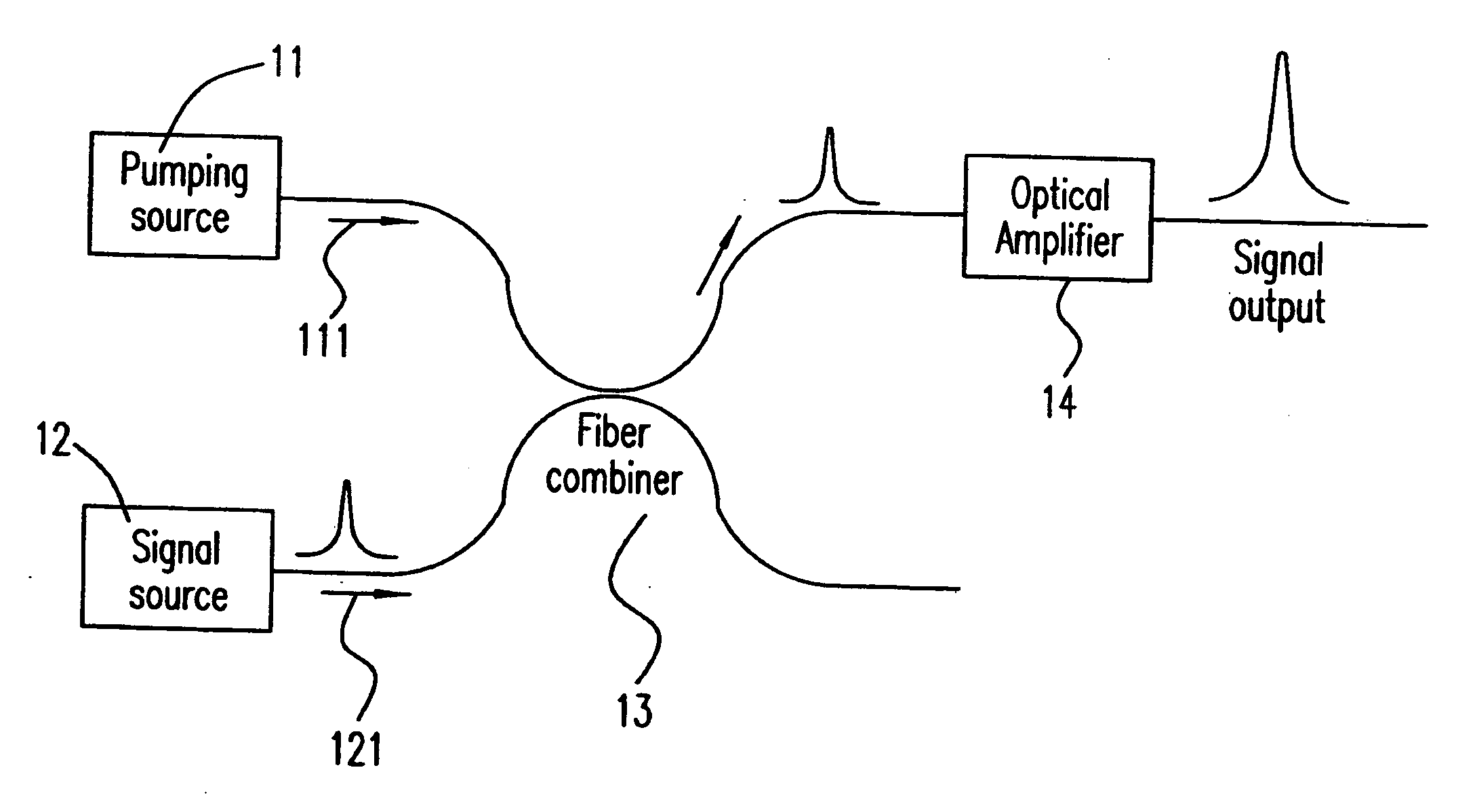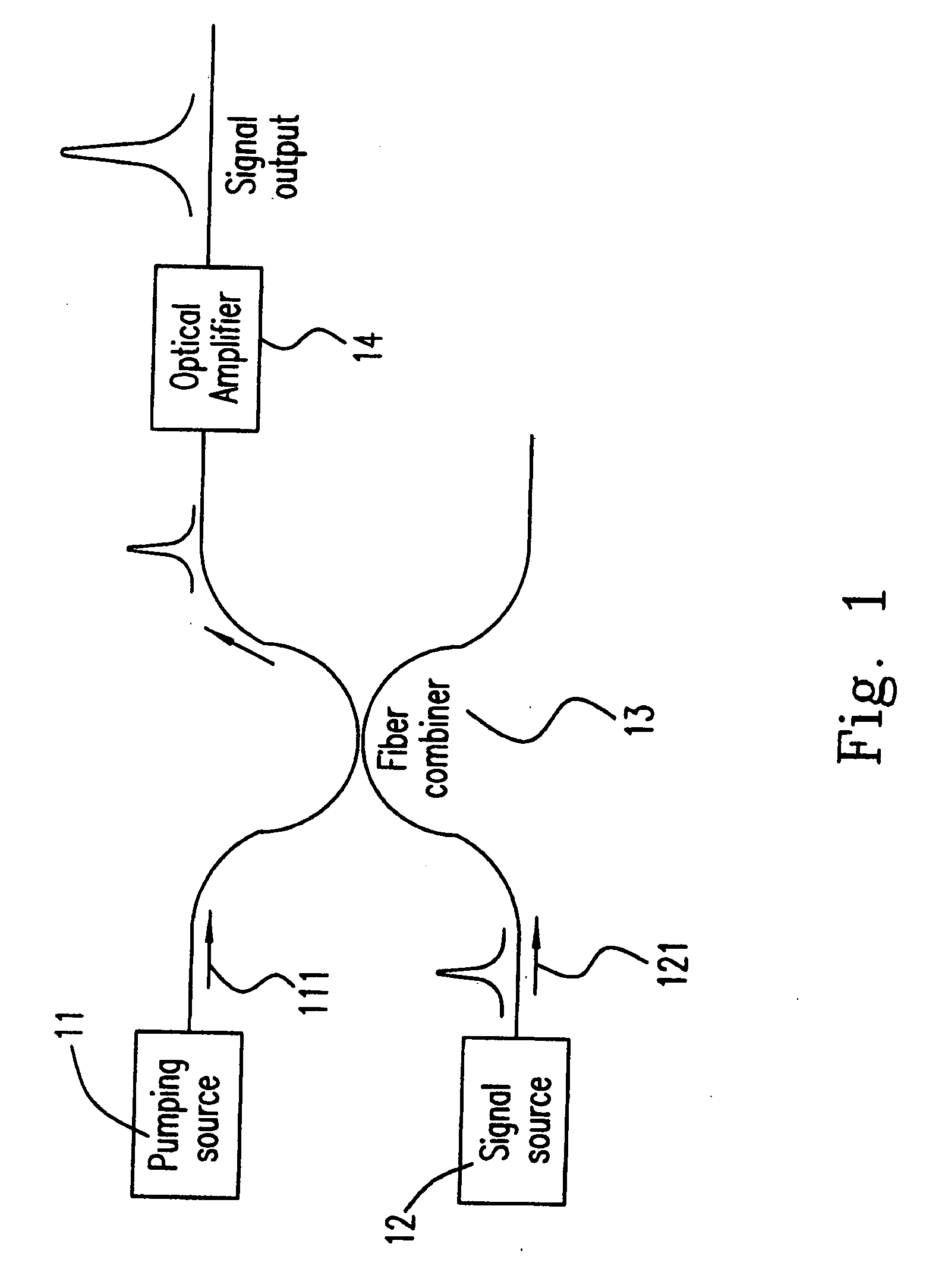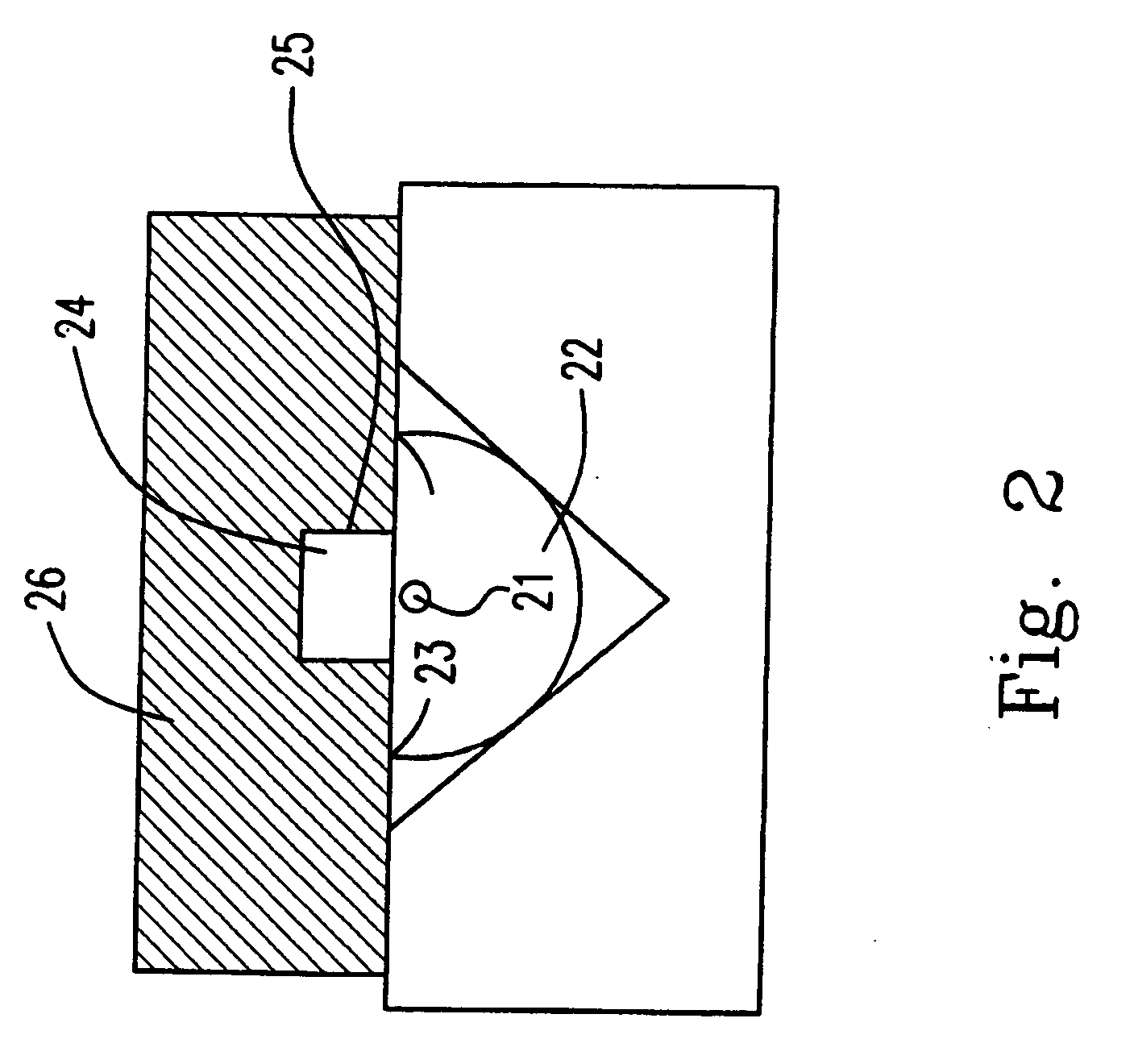Evanescent-field optical amplifiers and lasers
a laser and optical amplifier technology, applied in the direction of lasers, electromagnetic transmission, transmission, etc., can solve the problems of easy result of distortion, significant fresnel reflection loss, inter-signal modulation problems, etc., and achieve the effect of high pumping efficiency
- Summary
- Abstract
- Description
- Claims
- Application Information
AI Technical Summary
Benefits of technology
Problems solved by technology
Method used
Image
Examples
Embodiment Construction
[0070] The present invention will now be described more specifically with reference to the following embodiments. It is to be noted that the following descriptions of preferred embodiments of this invention are presented herein for purpose of illustration and description only; it is not intended to be exhaustive or to be limited to the precise form disclosed.
[0071] Please refer to FIG. 1, which illustrates the principle of the optical amplifier according to the present invention. The pumping light beam 111 from the pumping source 11 and the signal light beam 121 from the signal source are collected by the fiber combiner 13 and then propagate in a fiber (not shown). By an optical gain of the optical amplifier 14, which is related to the present application, a signal output having a higher intensity and a specific wavelength can be generated and continuously propagate in the fiber.
[0072] Please refer to FIG. 2, which illustrates the structure of the optical amplifier according to a ...
PUM
 Login to View More
Login to View More Abstract
Description
Claims
Application Information
 Login to View More
Login to View More - R&D
- Intellectual Property
- Life Sciences
- Materials
- Tech Scout
- Unparalleled Data Quality
- Higher Quality Content
- 60% Fewer Hallucinations
Browse by: Latest US Patents, China's latest patents, Technical Efficacy Thesaurus, Application Domain, Technology Topic, Popular Technical Reports.
© 2025 PatSnap. All rights reserved.Legal|Privacy policy|Modern Slavery Act Transparency Statement|Sitemap|About US| Contact US: help@patsnap.com



